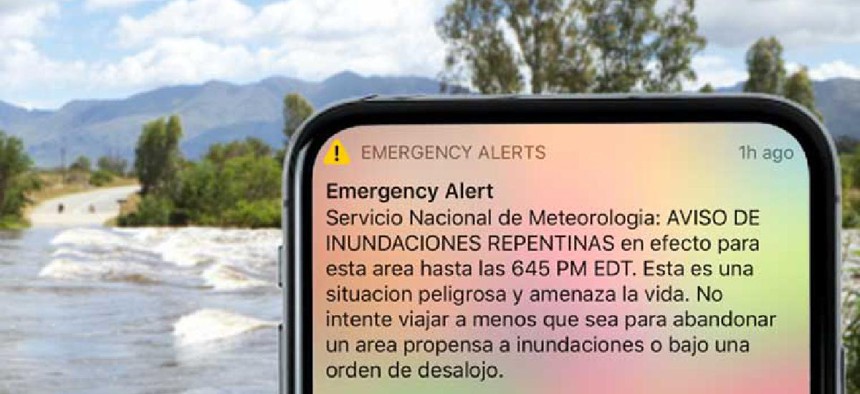How the Deepfake Task Force can improve the emergency alert system

Standards established by the Deepfake Task Force will enable the creation of a more powerful, flexible and reliable emergency alert system that can create messages in hundreds of languages and dialects – via text, audio or video.
On Aug. 11, a nationwide emergency alert test sent messages to TVs and radios and select cell phones that had opted-in to receive test messages. Since its inception in 2012, the wireless emergency alert system has been used more than 61,000 times to warn the public about critical situations. The August test marked the first time a WEA system sent the same test message in Spanish to phones that have Spanish set as the default language -- an outstanding advance for a nation diverse not only in population, but also language. According to a Census survey from 2018, 67.3 million U.S. residents spoke a non-English language at home. To effectively communicate with all U.S. residents in the event of an emergency, other languages are required.
Separately, on Aug. 4, the Senate Committee on Homeland Security and Governmental Affairs voted unanimously to advance the Deepfake Task Force Act, sponsored by Sens. Rob Portman (R-Ohio) and Gary Peters (D-Mich.). The legislation would establish a task force to develop a coordinated plan to explore how a “digital content provenance” standard could help reduce the spread of deepfakes and to build tools so content creators can authenticate their content and its origin. It aims to make it easier to relay trust and information about the source of the digital content to consumers.
While deepfakes can be used to mislead consumers, this very same technology can be leveraged in very powerful, helpful ways to inform, protect and enlighten. Artificial intelligence-produced “synthetic content” can create a single message in hundreds of languages and dialects – via text, audio or video. It will enable a more powerful, flexible and reliable emergency alert system.
It is critical that standards are created to ensure citizens have complete trust in the government’s mass messages. Standards established by the Deepfake Task Force will define not only the methods in which synthetic content is produced, but more importantly, make it easy for consumers to ensure and validate a message’s authenticity. Constituents should be empowered with tools to validate the authenticity of the message with even more reliability than markings on United States currency.
Now, for the first time in the country’s history, messages will be delivered simultaneously to all constituents with no priority bias due to language. No bias means U.S. residents fluent in Chinese, English, Portuguese, German -- or any language -- get a comprehensible message in the format (text, audio or video) and preferred language of choice from the government at the same time.
This next generation system overcomes the current limitations of the current emergency alert system. For the first time, we have the ingredients for the right recipe to reach every resident in their own language.
The Deepfake Task Force works to protect us from bad actors using AI technology to deceive America. It can empower government at the national, state, and local levels to use AI to create messages that reach all citizens and communicate in the most powerful, unbiased way.





